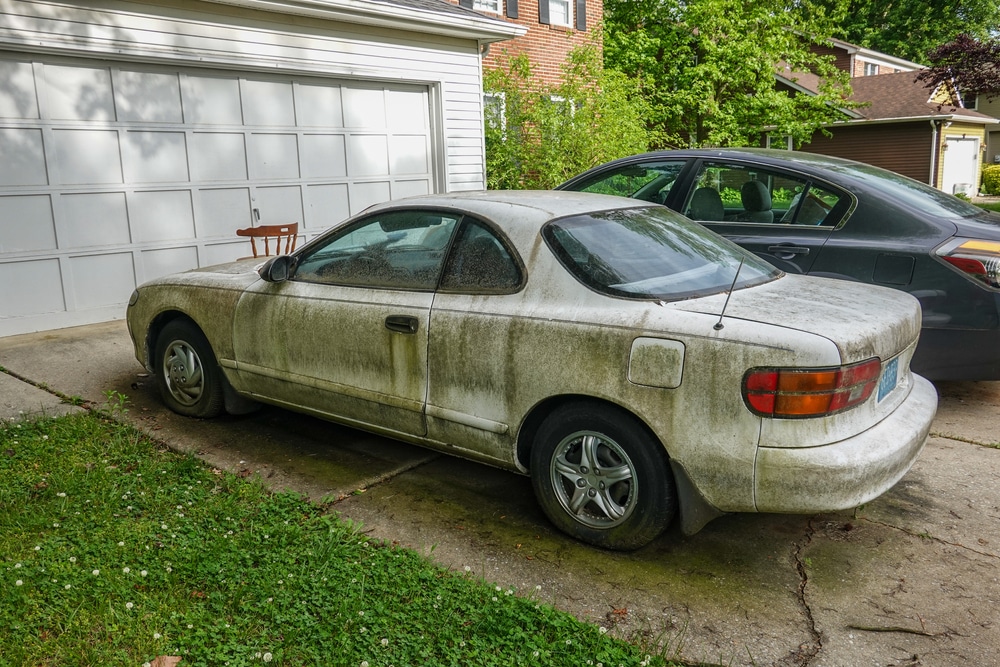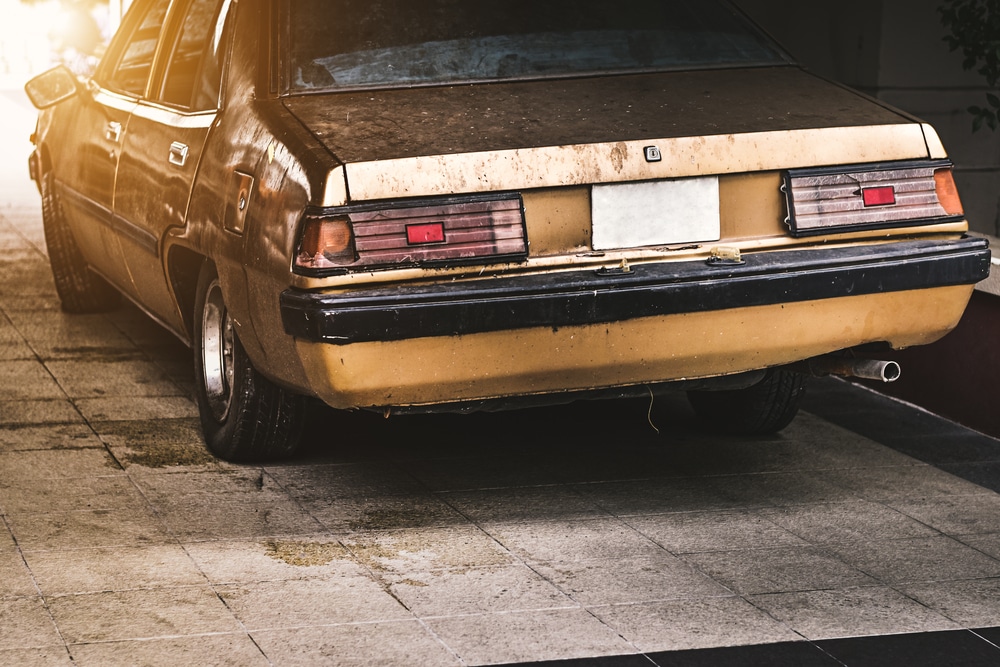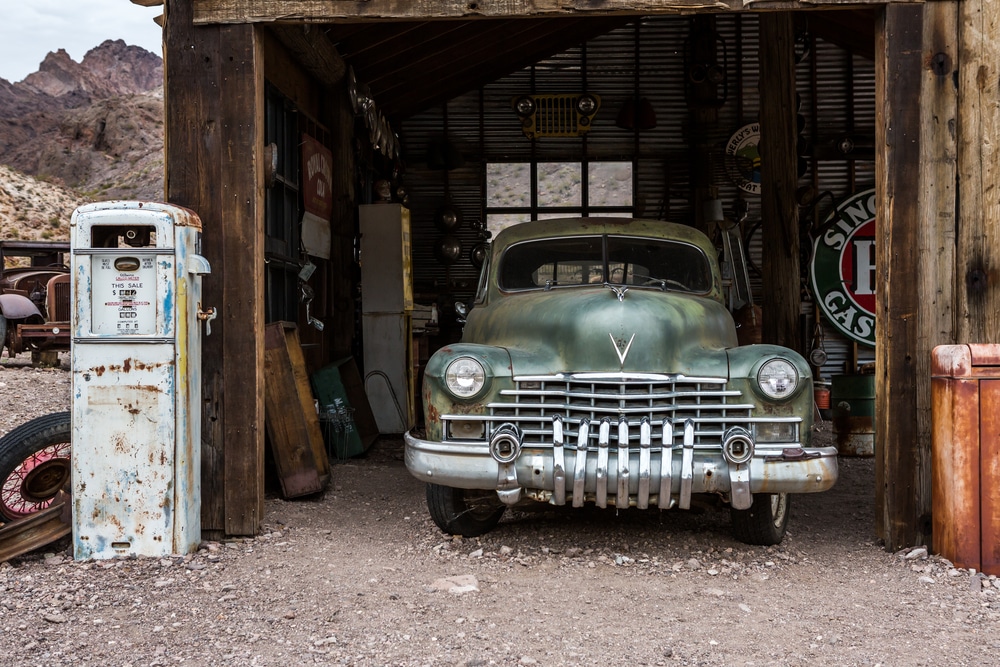Everything You Need to Know When Shipping a Non Running Car
Getting a car from one place to another just by driving it there isn’t always feasible. However, if the vehicle is completely inoperable on top of it, the task can become particularly challenging. Simply towing it to the desired destination is not always an option, so how to get a non running car home?
A car that is damaged or simply doesn’t start can still be shipped across great distances but requires specialized shipping services to get from A to B. Fortunately, non operational vehicle transport fills this gap.
Do you have an inoperable vehicle that needs to get across the country? Read on to learn everything you need to know about shipping a non running car.
What Is a Non Running Car?
There are many reasons why a car may be categorized as “non running,” and it doesn’t always mean the vehicle is beyond repair.
Naturally, a car that doesn’t start falls into this category. If the vehicle has been in an accident and has sustained considerable damage, it’s probably also inoperable. However, a car may also be completely drivable but still technically inoperable because the keys are missing. Thus, this makes it impossible to drive the vehicle onto the shipping carrier.
Next, a car may start but still be categorized as inoperable from the standpoint of the shipping company if one or some of its crucial functionalities don’t operate properly. If there are mechanical issues with the engine, its brakes, steering wheel, doors, etc., the vehicle is considered unsafe to drive and requires extra steps from the shipping company to transport safely.
Additionally, there are cheap non running cars for sale all the time. Some people purchase these vehicles for restoration or to supply parts for a similar vehicle. In either case, cars purchased from salvage auctions or similar events also need to be transported to the appropriate destination using inoperable vehicle transport.
Finally, some companies also consider exotic cars or cars that are presently undergoing restoration non running, so these may also require transport solutions aimed at inoperable vehicles.
Can I Ship a Non Running Car?
There are many criteria vehicles need to fulfill to qualify for transportation. Vehicle shipping companies often emphasize that the car needs to be in an operable state to ship using regular methods. However, this doesn’t mean shipping non running cars is out of the question. You would be surprised how often the necessity for these services arises.
Shipping inoperable vehicles is entirely possible, you just need to find a company that offers special services aimed at these non running vehicles. They usually clearly state whether these services are available right on their website, so vetting the companies won’t be too much hassle. In fact, some companies proudly advertise that they transport vehicles that have no wheels, so there is a solution for everyone.
Why Does Shipping a Non Running Car Require Special Services?
Whether you’re getting an operable or inoperable vehicle shipped, the vehicle will need to be transported up on the ramp of the shipping truck. When it comes to operable vehicles, getting this done is as easy as turning on the engine and maneuvering the vehicle up the ramp. However, an inoperable vehicle requires a bit more effort than that.
To lift the vehicle, the shipping company needs to have special equipment, such as forklifts, winches, etc., ready for the task. The company also needs to deploy personnel who are qualified to operate these pieces of machinery. Not all types of transport trucks are suitable for shipping inoperable vehicles either, so the company needs to make additional arrangements to ensure they can provide an appropriate vehicle at the agreed time.
Naturally, all of this means additional logistics challenges and makes shipping a non running car more complicated and, therefore, more expensive.
How Are Non Running Cars Shipped?
If your car is inoperable for any of the reasons mentioned above, you may be wondering about how to transport a car that doesn’t run. You can rest assured that reputable companies already have a well-working system that guarantees that your vehicle will get to its destination in the same condition it was picked up in. Here’s what you need to know about the process.
Non Running Car Pickup
Shipping companies need to use special equipment to load non running vehicles on their shipping carriers, but not every non running vehicle requires the same kind of treatment. Here are some of the common reasons why a car is inoperable and what kind of pickup solution it will require.
Cars That Can’t Start
A car that cannot start or doesn’t have its keys but is otherwise sound doesn’t pose a significant transport issue. These cars are loaded on the shipping carrier with their gear in neutral and their stirring wheel pointed straight. While this type of inoperable vehicle doesn’t require heavy-duty forklifts, it does require the help of a tow truck and a winch to be loaded and unloaded.
Cars That Have Mechanical Issues
Cars that have been damaged or have mechanical problems are a tad more challenging. If the car cannot roll or doesn’t even have wheels, a winch won’t be enough to get it on the trailer. A special forklift is going to be necessary since the car needs to be lifted and not pushed or pulled. Meanwhile, cars that cannot brake or steer are often recommended to be repaired prior to shipping to make the endeavor safer.
Damaged Vehicles
As for cars with collision damage, a forklift is usually necessary as well. Loose parts need to be secured before shipping, too, which requires additional work from either you or the shipping company.
Non Running Car Transport
The next question those wondering how to transport a car that doesn’t run might have pertains to the shipping carrier itself. Just like operable vehicles, non running cars can be transported on open trailers or enclosed carriers. Which one is more suitable for your situation depends on various factors.
Open Car Transport
Open car transport is the standard in the automotive industry. It’s a safe and cost-efficient method to get a vehicle from one place to another, whether it’s running or not. Open trailers can fit up to 10 vehicles at once, which can considerably lower transport fees. However, this mode of transport doesn’t protect vehicles from the weather and other potentially damaging elements on the road. If you’re shipping a classic car that is under restoration, this may not be the option for you.
Enclosed Shipping
On the other hand, non running vehicles may also be transported in enclosed shipping carriers. These carriers fit only a few vehicles at a time – in some cases, only one – which makes them a more expensive solution. However, they provide protection and privacy, which are sometimes key when shipping a non running car.
An enclosed carrier isn’t only for expensive vintage cars. Sometimes, damaged vehicles need this solution as well. Cars that have sustained collision damage might have loose parts that pose the risk of moving during shipping. This can not only damage the vehicle itself and the rest of the vehicles on the shipping trailer, but it can also endanger other drivers on the road. A closed container is thus a better solution in this case.
What to Consider When Shipping a Non Running Car
Shipping non running cars isn’t always significantly different from regular auto transport. However, it still requires a few extra considerations. Here are some tips to ensure a smooth process.
Find a Reliable Company
Successful inoperable vehicle transport starts with finding the right company for the job. Your car will be in these people’s hands, so don’t just skim their websites or let a broker choose one instead of you.
First of all, check the services each company offers to ensure they accept non running vehicles, as not every auto shipping company specializes in inoperable car transport. Secondly, look up reviews and read about other customers’ past experiences to see just how reliable the company is.
Finally, when you’ve selected a few promising candidates, contact each with your requirements and request a quote. Compare their prices but be sure not to make your decision based on the price alone. Suspiciously low prices may suggest that hidden fees are about to come your way.
Consult With Them in Advance
Even if the company’s website specifies that they offer non running car transport interstate, be sure to let them know that your vehicle is inoperable well in advance. The company needs to know about the condition of your vehicle in detail to organize the necessary services. As mentioned, the reason your vehicle isn’t operating will determine the type of equipment the shipping company will need to prepare.
Be Aware of Limitations
Next, make sure you leave the company enough time to get things in motion. Since special equipment is necessary for picking up inoperable cars, the availability of the equipment might determine the time your car can ship. Non running car transport might thus be less flexible than regular vehicle transport in this regard.
In addition, not every company that does non operational vehicle transport has its own equipment and staff to operate it. Therefore, they might need to involve additional people in the pickup and drop-off of your vehicle, which requires further arrangements.
Inquire About Insurance
Whether your car is operable or not, you probably want to be sure it’ll be safe on its long trip from one state to another. Don’t take insurance for granted. Inoperable vehicle insurance might differ from regular vehicle insurance, so it’s important to ask the shipping company about the details of their policy for this type of car.
Consider Door-to-Door Services
Inoperable vehicle pickup requires special arrangements. Transporting your vehicle from your home to a vehicle pickup point can prove to be a challenge. Therefore, it’s best to employ door-to-door services when it comes to non running cars. This will make the process significantly simpler for you. Look for a company that offers this option.
Park in a Spacious Area
The process of loading a non running vehicle on a shipping carrier usually requires some maneuvering, which means the task can only be completed if ample space is available. Naturally, not all streets are wide enough to allow for this task to be done. If you can, move your vehicle to a spacious parking lot to ease pickup. Don’t worry even if you can’t arrange this yourself. Shipping companies are usually happy to offer additional towing services for cars that won’t start to get them to a safe spot where they can be loaded to the carrier with no problem.
Prepare for Additional Costs
Although non running vehicles take up the same amount of space on a shipping carrier, they still cost more to deliver because of the special pickup and drop-off arrangements. The additional costs aren’t necessarily significant. Depending on your vehicle’s condition, you might pay just a couple of hundred bucks more for transportation. However, you still need to be prepared for added fees, so consult with your shipping company beforehand.
Try to Get the Car Repaired
Certain car issues can make transportation especially challenging. This is why many shipping companies won’t even accept cars that have problems, for instance, with their brakes. But why pay extra for shipping when getting the car repaired can make it functional again?
If it’s possible to fix the car before shipping, doing so is the smartest way to go. You’ll save on transport, recouping the repair costs, and you’ll be able to use your vehicle as soon as it arrives at its destination. You’ll probably get the vehicle repaired after transport anyway, so there’s no reason not to swap the order.
Prepare Your Vehicle
Just like an operable car, you need to prepare your inoperable vehicle for shipping. We already mentioned that loose parts of damaged cars need to be secured. Don’t forget to also remove personal belongings and removable accessories from the vehicle’s interior. Inoperable vehicles should also be drained of their fluids to lower their overall weight and possibly reduce shipping costs.
Reliable Inoperable Car Shipping
Getting an inoperable vehicle from A to B can seem like a challenge, but experienced shipping companies will get the job done. If you’d like to learn more about our non running car transport services, don’t hesitate to contact us or request a quote.





